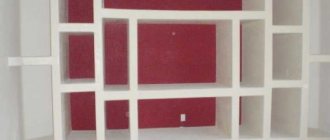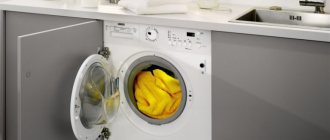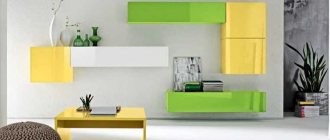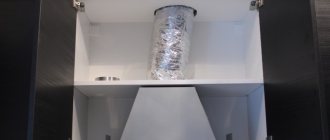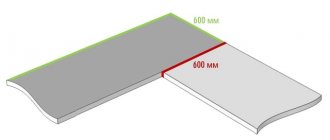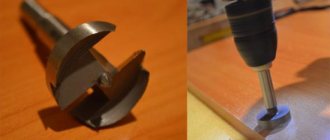Types of backlight
Lighting devices for the work area in the kitchen are varied. The approach to choice is strictly individual, it all depends on the needs and personal tastes. Nevertheless, there are a number of recommendations for choosing lighting proposed by designers. Preference should be given to the white spectrum, since its characteristics are as close as possible to a natural light source. Thanks to this, the appearance of food is not distorted, which is important when cooking.
It is recommended to use three or more light sources simultaneously. In this situation, uniform illumination of the working surface without unnecessary sharp shadows is guaranteed. The illumination is soft.
When choosing lighting, it is advisable to take into account the style of the entire kitchen. LED lamps should fit into the overall concept of the interior, being a natural complement to the kitchen set. In this case, the result will be not only functional, but also beautiful.
Recessed luminaires
Recessed lamps are considered a fairly common option for illuminating a work surface. They are spots with LEDs that have a number of advantages:
- Lighting brightness. All objects located on the tabletop can be examined in detail.
- No heat generation. Even with prolonged use, the lamp does not have an undesirable effect on food products located in the work area.
- Possibility of directional illumination of all necessary areas.
- Easy replacement of light bulbs.
The disadvantages of recessed lamps include the mandatory installation directly inside the bottom panel of the cabinet. This is explained by the fact that the height of the lighting element reaches 5 cm. Consequently, the kitchen set loses its integrity, and the facade can be damaged during installation.
Recommendations for restoring kitchen furniture with your own hands
LED panels
Another option for LED lighting under kitchen cabinets are LED panels. This model is an innovative lamp that is becoming increasingly popular among consumers. This is due to a number of important advantages:
- The thickness of the LED panel is less than 14 mm. Overhead lamps will be as invisible as possible.
- Diffused soft light. Thanks to this characteristic, there is a visual expansion of space. This makes you feel more comfortable while cooking.
- Energy saving.
- Durability of use.
- Possibility of installation under the base of lower kitchen cabinets to create a floating effect.
- Variety of existing sizes.
The LED panel is an easy-to-assemble design. The structure includes an aluminum case, an LED line, a power supply, and a power button. The presence of additional elements is the only drawback of this innovative lighting device.
LED Strip Light
The simplest option for illuminating a work surface is considered to be LED strip, which is widespread in all areas of life. It consists of an elastic conductive substrate and LEDs. The tape is so thin that it is practically invisible on the surface. Main advantages:
- Instant operation, the backlight does not require time to warm up, the light appears the moment it is turned on, without delay.
- Does not spoil the appearance of kitchen cabinets. Thanks to its compactness, it is suitable for any interior, regardless of style.
- Electricity consumption is reduced to a minimum.
- Durability: By installing linear LED strips, you can forget about replacing them for a long time.
- A variety of colors that can be changed depending on the situation. For example, when cooking, a white spectrum is selected, which brightly illuminates all objects on the work surface. But for tea drinking you can set it to red or yellow.
- Ability to create a variety of configurations.
The use of LED strip under cabinets in the kitchen is ideal in all respects. The only drawback is the mandatory presence of a transformer. A separate place should be allocated for this element. It is advisable to disguise it somewhere inside one of the lockers.
How to make kitchen corners with your own hands, master classes
Accommodation options
When choosing lamps for the kitchen, you should carefully consider their location on the bottom panel of the kitchen unit. After all, no one has canceled the laws of physics. The degree of lighting intensity and the direction of the light flux depend on proper placement. Three location options are possible:
- In the corner. Namely, at the junction of the lower surface of the cabinet with the apron. This modification involves illuminating the wall and objects located directly next to the apron. Most often recommended for decorative purposes, since the main working surface receives a small part of the emitted light.
- In the middle. This option is best suited for directional illumination of the surface on which the entire food preparation process is carried out.
- Closer to the end of the locker. The location provides excellent illumination of the work area, but may create some discomfort. This is primarily due to eye fatigue. Also, all lighting elements will be located on visible areas of the bottom panel of the kitchen unit, which negatively affects the appearance.
Options for placing lighting under cabinets also vary depending on specific areas: sinks, stoves and countertops. Each area can be illuminated separately using a different spectrum and degree of light intensity.
In the corner
In the middle
Closer to the end of the locker
Necessary calculations
Furniture lamps for the work surface in the kitchen should be chosen with special care. To do this, it is necessary to remember that proper placement implies the creation of lighting with the formation of the smallest number of shadows, which can visually change the shape and color of objects. To avoid mistakes, it is recommended to first make the necessary calculations taking into account the characteristics of the lighting device:
- Power. It is selected based on the size of the illuminated surface according to the principle of proportionality. Low power LED lighting fits perfectly into a kitchen with a small work area. But for a kitchen set of impressive size, it is recommended to choose brighter lighting fixtures.
- Scattering angle. The required number of lighting points depends on it. The wider the angle, the fewer lamps will be needed to fully illuminate the tabletop.
- Colorful temperature. It must be remembered that the cold spectrum is brighter than the warm one. Therefore, the higher the temperature, the more lamps will be needed.
Criteria for choosing modular furniture for the kitchen, tips for arranging it
Thus, having chosen the lamp option you like to illuminate the work area, you should study its characteristics. Then you need to measure the area of the working area. Only after this can you accurately calculate the required number of lamps.
Power
Scattering angle
Colorful temperature
How not to get confused in diversity
Today, probably, kitchen furniture lamps have the widest range on the lighting market. In order to correctly choose the most suitable model for yourself, you need to have at least a minimal understanding of the range of this lighting product. Furniture lighting fixtures can be divided into different types according to a wide variety of parameters. For example, the most important choice for many people who will make their own lighting is what their installation will be. According to this parameter, furniture kitchen models are divided into two categories:
- built-in They can be mortise or point. The installation of such lamps is planned at the stage of assembling the kitchen unit. But the installation itself is carried out after its assembly. This type of lighting fixture is used to illuminate the contents of drawers, cabinets, and the work area;
Recessed furniture lamps
- invoices. This is the most popular type of lamps, as their installation is simple and easy to do with your own hands. The main advantage here is that overhead lighting fixtures can be installed on absolutely any surface. At the same time, overhead furniture lamps can be replaced or removed at any time.
Note! Overhead models today are used as the main lighting on the ceiling or as working lighting on the lower part of the kitchen unit.
Overhead furniture lamps
It is worth noting that overhead models, which are most often used for kitchen lighting, can be equipped with a rotating mechanism. It allows you to direct light to the desired area, which greatly increases the functionality of this type of lighting fixture. Therefore, if you don’t want to bother with embedding lamps into furniture, the simplest solution for kitchen lighting would be overhead lighting products.
Tips for installation and connection
The LED lamp is easy to install and connect. The main condition is mandatory compliance with safety regulations. Before starting work, you should turn off the power to avoid unpleasant consequences when connecting the contacts of the lamp to the electrical wiring.
Installation of the backlight must be carried out strictly in accordance with the instructions set out in the instructions supplied with it. The simplest option is an overhead LED strip. It is enough to glue it to a pre-designated place, taking care only of masking the included transformer.
LED panels have an average level of installation complexity. Each panel is attached separately; for this procedure you can use adhesive-based products or small screws, it all depends on the model. In addition, each panel has a power supply and a touch or push-button activation mechanism, which are recommended to be hidden inside the kitchen unit.
The most difficult to install is the built-in lamp. It requires carpentry skills and special equipment. You need to make a hole in the bottom panel of the kitchen unit and insert the device into it. Then hide the wires and the power button.
After installing the luminaire in a pre-selected location, it is connected to the wiring or connected to the network. Only after this is it possible to turn on the power and check the operation of the LED backlight. If all the above recommendations are followed, high-quality additional lighting in the kitchen is guaranteed.
Before starting work, turn off the power
Hide the power supply and touch switch mechanism inside the kitchen unit
After installing the lamp, connect it to the wiring
Turn on the electricity
Check the operation of the LED backlight
How to install LED lighting yourself?
If you do not want to use the services of specialists in this field, you can install the LED strip in the kitchen with your own hands, having all the necessary materials. For installation we will need:
- If you use LED strips: glue (or double-sided tape);
- scissors or stationery knife;
- soldering iron;
- wires;
- heat shrink;
- power unit.
Installing an LED strip in the kitchen is incredibly simple, despite the abundance of wires and the peculiarities of connecting LEDs to a power source. From the switch, the wires are connected to the power supply. From it, wires are connected in parallel to the LED strips themselves. It is important that the connection is not serial - this can have a very negative impact on the operation of the LEDs, from the fact that they will not light up to the fact that they will burn out altogether.
Parallel connection diagram for LED strips
If you need to install a dimmer (a device that can regulate the brightness of LED backlighting for kitchen cabinets), then it must be built into the system before the LED strips, but after the power supply.
Dimmer connection diagram to the system
How to install LED strip? The most effective and stable option would be to divide all the elements into strips no longer than 5 meters, which is quite easy to implement even in a large kitchen. The tape is cut exclusively in special places, which are drawn directly on the tape with the icon of small scissors. It is advisable to connect the strips in the kitchen lighting under the cabinets not with ordinary connectors, if you do it yourself, but by soldering them - this will give the structure greater reliability when electric current flows through it.
The assembled LED strip must be glued with double-sided tape to a previously degreased surface; if the LED kitchen lighting gets very hot, place a thin aluminum strip between the strip and the surface.
The power of the power supply is selected according to the power of electricity consumed + 20% of the reserve.


